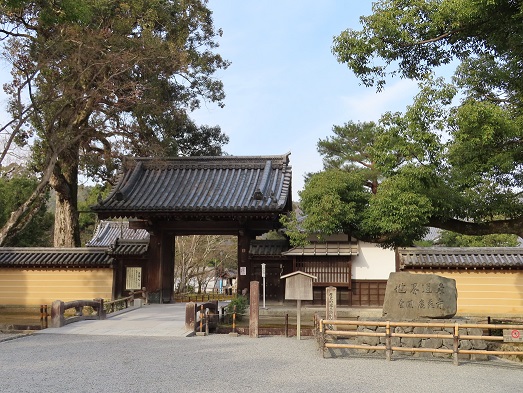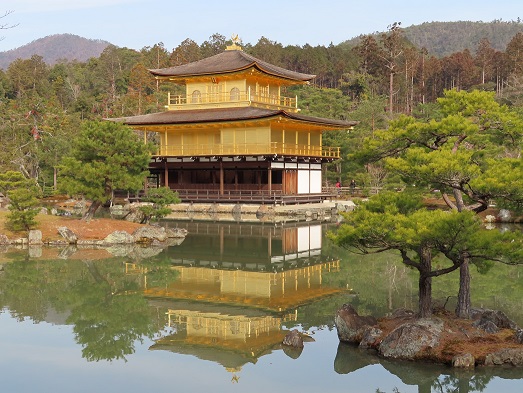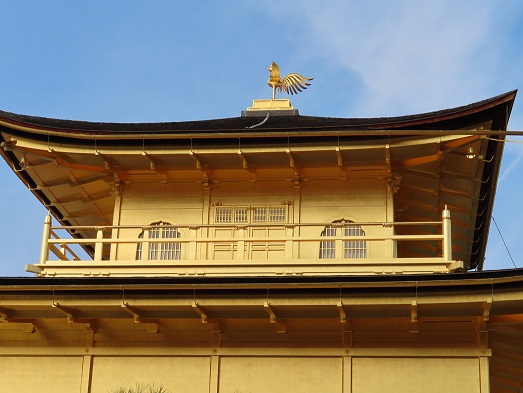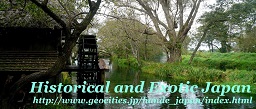Rokuonji Temple is known as "Golden Pavilion" in English or "Kinkakuji" in Japanese.
Rokuonji was originally a villa of FUJIWARA-NO Kintsune, who was a novelist at the end of the Kamakura Age.
In 1397, Shogun ASHIKAGA-NO Yoshimitsu built his villa at the place of the villa of FUJIWARA-NO Kibtsune.
Golden Pavilion was the Reliquary (container of relics) Hall of the ASHIKAGA-NO Yoshimitsu's Villa.
After ASHIKAGA-NO Yoshimitsu died in 1420, his villa was changed to Zen Temple according to his will.
Main Gate

When you pass the Main Gate, there is a pond named "Kyokochi". On the north of "Kyokochi" Pond, you will see Kinkaku,"Golden Pavilion".
Kinkaku "Golden Pavilion"

This pavilion is the symbol of wealth and power of the Shogun ASHIKAGA Family.
Late 14th century was the peak power period of the ASHIKAGA-Family.
So, ASHIKAGA-NO Yoshimitsu was able to build the most gorgeous pavilion in Japan.
Golden Pavilion burned down due to arson in 1950. The original Golden Pavilion was a national treasure of Japan. This arson was a very much shocking tragedy and Golden Pavilion was rebuilt just five years later.
If you walk along the "Kyokochi" pond, you will approach to Golden Pavillion. You will be impressed with the gorgeous view of the pavillion.
If you walk to the Golden Pavilion along the "Kyokochi" pond, the Main Hall is on your right.
The Main Hall was rebuilt in 1678. The pine tree named "Rikushu" is located at the Main Hall. It is said that this pine tree is the ASHIKAGA-NO Yoshimitsu's own planting.

 Home Page in Japanese: "Shane's HomePage"
Home Page in Japanese: "Shane's HomePage"

 Home Page in Japanese: "Shane's HomePage"
Home Page in Japanese: "Shane's HomePage"